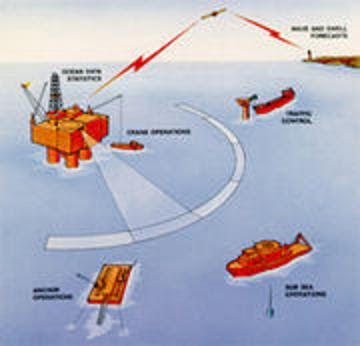
Marine navigation radars (X band) provide sea clutter images which contain a pattern resembling a sea wave pattern. By digitizing the radar video signal it can be processed by a digital computer. Sea surface parameters may be calculated on the basis of these digitized images. The marine navigation radar operates in low grazing angle mode and wind generated surface ripple must be present. The marine navigation radar is non-coherent and is a typical example of an indirect wave sensor, because there is no direct relation between wave height and radar back-scatter modulation amplitude. An empirical method of wave spectrum scaling is normally employed. Marine navigation radar based wave sensors are excellent tools for wave direction measurements. A marine navigation radar may also be a tool for surface current measurements. Point measurements of the current vector as well as current maps up to a distance of a few km can be provided (Gangeskar, 2002). Miros WAVEX has its main area of application as directional wave measurements from moving ships.




















No comments:
Post a Comment